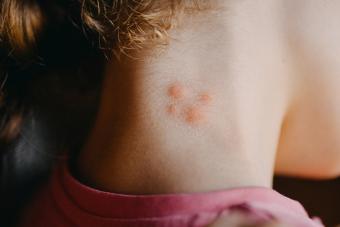
Wart removal is simple in most cases; you can buy a kit at the drugstore and do it yourself. However, large or stubborn warts might require a doctor's visit.
What Causes Warts
Warts are caused by a virus called Human Papilloma Virus (HPV). The virus causes skin to grow faster than usual, forming a bump. HPV is contagious. You can get it from other people or through contact like from locker room shower floors. However, touching someone with warts does not mean you will definitely catch the virus. It depends on the particular strain of HPV and on the strength of your immune system. Breaks or cuts in the skin may make infection more likely.
You cannot contract warts from touching frogs or toads--that's just a myth.
Untreated Warts
Left alone, most warts will eventually go away. It takes six months to two years for the body to fight off the virus. If a wart isn't causing any problems, it may be easiest not to treat it at all. If, on the other hand, it's in a noticeable place or interferes with activity, wart removal is an option.
Home Remedies
People have come up with a lot of home remedies for warts. According to the American Osteopathic College of Dermatology, duct tape might be helpful. Simply cut a piece of duct tape and cover the wart and surrounding skin with it. Leave the duct tape in place for six and a half days at a time, letting the skin breathe for a half day each week. Stop the treatment if the skin appears irritated. The duct tape method of wart removal works by cutting off the oxygen to the wart virus.
Some people get good results using tea tree oil for wart removal. You can find this at health food store or purchase it online. Apply the tea tree oil to the wart once or twice a day. It may take several weeks to work. Again, stop treatment if your skin becomes reddened or irritated; some people are allergic to tea tree oil.
Drugstore Options
The drugstore aisle offers several options for wart removal, including:
- Salicylic acid: This method takes as long as 12 weeks to work. It's available as a liquid or a gel, or in small adhesive pads that stay on the skin. You'll need to paint the liquid on twice a day and be careful not to get it on the surrounding skin. Gels have similar instructions, but are designed not to drip onto the skin. The adhesive pads are simpler--you just stick one on over the wart. They can remain in place for 48 hours at a time.
- Freezing treatments: These come with applicators that contain a special blend of chemicals. Once activated, the applicators become cold enough to freeze the skin. Simply apply the tip of the applicator directly to the wart and hold it in place for a brief time. The wart should fall off or peel away over the next several days. According to the manufacturers, many warts will require just one treatment. Although instructions vary by company, some warts require up to four treatments.
Be sure to follow the package instructions for any drugstore wart removal treatment.
Wart Removal at the Doctor's Office
If the drugstore treatments don't work, it is time for a doctor visit. Some people, especially those with circulation problems, should skip the drugstore and home remedies and consult a doctor first. Warts that appear on the genitals or on mucous membranes, such as the inside of the lip, should be treated only by a doctor. Warts on infants and very young children require a doctor's care, too. In addition, if you have any concern that your skin condition is not a wart (for example, if you're worried about skin cancer), check with the doctor before trying to treat it yourself.
Your doctor will probably try one of these things:
- Freezing: Your doctor may use liquid nitrogen or a substance similar to over-the-counter freezing treatments.
- Acid: Your doctor may use a strong acid or other medication to cause the skin to blister, lifting away the wart so it will fall of or can be easily removed.
Other treatments for stubborn warts include cutting them away with a scalpel, laser removal, burning with a special electrical device, injections to disrupt or kill the virus, and medicines to boost the immune system. These are usually reserved for warts that don't go away with other treatments.







